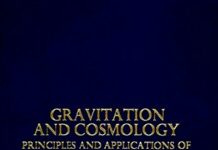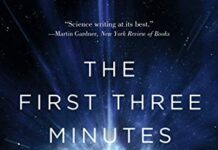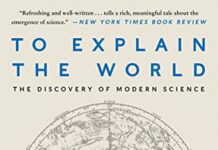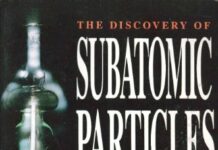
Ebook Info
- Published: 1996
- Number of pages: 514 pages
- Format: PDF
- File Size: 15.88 MB
- Authors: Steven Weinberg
Description
The Quantum Theory of Fields, first published in 1996, is a self-contained, comprehensive introduction to quantum field theory from Nobel Laureate Steven Weinberg. Volume II gives an account of the methods of quantum field theory, and how they have led to an understanding of the weak, strong, and electromagnetic interactions of the elementary particles. The presentation of modern mathematical methods is throughout interwoven with accounts of the problems of elementary particle physics and condensed matter physics to which they have been applied. Many topics are included that are not usually found in books on quantum field theory. The book is peppered with examples and insights from the author’s experience as a leader of elementary particle physics. Exercises are included at the end of each chapter.
User’s Reviews
Reviews from Amazon users which were colected at the time this book was published on the website:
⭐I purchased this book in like new condition and it arrived looking brand new. Very well packaged and arrived a couple days early. Thank you
⭐If you want to understand QFT deeply, don’t look elsewhere. Just read this (and the first volume).
⭐Excellent book!
⭐Very Good!
⭐without peer
⭐In Memoriam:Steven Weinberg (May 3, 1933 – July 23, 2021)”He continued to be an ambassador for science throughout his life.” (Austin, UT News, 24 July 2021).As many have noted, it is wise to study Weinberg’s volume one before attempting his second volume.As with the first volume, the second requires undivided attention. The volumes refer back and forth to one another. For instance: “it is necessary that the action should contain all possible terms allowed by the assumed symmetries of the theory (read here, page 234), then also volume one (page 506). Now, volume one asks: “Is Renormalization Necessary ?” (page 521) and refers to volume two for further details regards low-energy Pions. In volume one read: “a formula like #9.5.64 allows us to derive nonperturbative results by using topological theorems to derive information about the eigenvalues of kernels” (page 413) and this will be detailed in volume two. Wise to keep both volumes at hand. Also, keep two references handy: Hardy’s Divergent Series (referenced page 294, regards Borel transformation) and MIT volumes published 1980, Encyclopedia of Mathematics (referenced page 238, regards De Rham Cohomology). Being useful, whether or not you study Steven Weinberg ! Now, Steven Weinberg words of wisdom:(1) “There is today a widespread view that interacting quantum field theories that are not asymptotically free, like quantum electrodynamics or the scalar field theory with phi-four interaction, are not mathematically consistent; fortunately, the question of whether a theory is asymptotically free for some finite range of coupling constants can be settled by perturbative calculations.” (page 138).(2) “it is possible that the quarks and gluons exhibit some new kind of interaction at energy scale much larger than the scale characteristic of quantum chromodynamics.” (page 153).(3) “Spontaneous symmetry breaking actually occurs only for systems that are infinitely large.”(page 164).(4) “Spontaneously broken local symmetries do not lead to Goldstone Bosons.” (page 172).(5) “Effective field theories provide the most convenient method for working out the consequences of symmetries and the general principles underlying quantum field theory.” (page 209).(6) “As has happened earlier (dispersion relations and Feynman’s diagrammatic rules) the effort to bypass quantum field theory led to valuable general results, but results that can be understood as general properties of quantum field theory.” (page 252).(7) “A superconductor is simply a material in which the electromagnetic gauge invariance is spontaneously broken.” (page 332).(8) ” This feature of superconductivity, that a Goldstone Boson forms for an attractive potential–however weak the potential may be–is a consequence of the existence of a Fermi surface, which enhances long-range effects.” (page 351).Finally, I highlight the efficacy of Steven Weinberg’s approach: the methodology he embraces serves the student for many a year, that is, many a year beyond any ‘required’ coursework. From General Relativity to Cosmology to Quantum Mechanics and Quantum Field Theory–I have benefited enormously from his monographs (Or, stronger: I did not truly understand Quantum Field Theory until studying his work).
⭐Before Weinberg’s books, a typical graduate student in theoretical physics would study the standard textbooks (e.g. Itzykson-Zuber, Peskin-Schroeder) to pass QFT courses. When confronted with actual research problems, he would discover that all he has learned is how to do calculations in perturbation theory, that he is unfamiliar with a host of ideas and techniques that are widely used in the present-day research literature and that he has to resort to original papers and reviews to learn them.Weinberg’s three-volume set drastically changed this situation, giving the most authoritative and complete presentation of QFT to appear in a textbook. Although it is not suitable for beginning graduate students, it is invaluable for covering all these topics that are typically omitted in QFT courses and for providing valuable insight missing from other textbooks.The highlight of the set is Volume 2, which includes most topics where Weinberg has made his own invaluable contributions. In his inimitable style, Weinberg guides us through the great developments in QFT from the 1960’s to the 1980’s, including most topics that are essential for a working knowledge of modern QFT. The presentation is crystal clear throughout and every topic is presented in as much detail as it deserves. In particular, the chapters on spontaneously broken symmetries are simply masterpieces, the treatment of anomalies is the most complete ever, while the chapter on extended objects is a thorough overview of an ever-expanding subject. This book is a must for everyone working on theoretical physics.
⭐I have found this text extremely useful as a guide to the essentials of modern renormalization theory, as well as modern quantization techniques for Non-abelian gauge theories. The chapter on extended field configurations is nice, though it is meant as an overview and guide to the literature. What I like most about this volume is the discussion of experimental or phenomenological issues that complements many of the discussions. He has a broad base of knowledge in particle physics, as well as field theory. If you don’t have volume 1, get that first.
⭐Good quality and fast delivery – as expected.
⭐The hardcover version of this book(volume 2) seems to be a pirate. What makes it suspicious is that the spine of the binding is nothing like any other book that I have seen from Cambridge so far not to mention the quality of the paper. The original Volume 1 that I have is an actual cloth binding unlike this one & the paper quality is way superior. Don’t buy from this “Amazon fulfilled” seller. Buy from other imported amazon sellers.It seems that some of amazon India seller pirate books & sell. It will not be obvious to people who don’t have huge range of books but for someone like me I can easily see the difference. Now it makes me worried have they pirated the rest of the volumes ? Even worse other books from Cambridge & other big publishers ?
⭐É um livro incrível, trazendo em cada capítulo a intuição e a matemática necessária.Também vale dizer que é bem diferente do volume 1. Neste o autor constroe as fundações, portanto são sempre discussões razoavelmente diretas. Já no volume 2 são as aplicações, portanto são atacados problemas de alta complexibilidade com as ferramentas desenvolvidas anteriormente.Além disso note que muitos outros livros de QFT (após 1995) quando começam uma discussão um pouco mais geral de certo assunto, acabam eventualmente referenciando o Weinberg.Muy bien en todo. El texto es de referencia, de alto nivel pero con un esfuerzo notable por parte del autor para hacerlo asequible.Everyone who want to know anything about Quantum Field Theory should read and study this book, it is extremely detailed and rigorous, perfect
Keywords
Free Download The Quantum Theory of Fields: Volume 2, Modern Applications (The Quantum Theory of Fields 3 Volume Hardback Set) 1st Edition in PDF format
The Quantum Theory of Fields: Volume 2, Modern Applications (The Quantum Theory of Fields 3 Volume Hardback Set) 1st Edition PDF Free Download
Download The Quantum Theory of Fields: Volume 2, Modern Applications (The Quantum Theory of Fields 3 Volume Hardback Set) 1st Edition 1996 PDF Free
The Quantum Theory of Fields: Volume 2, Modern Applications (The Quantum Theory of Fields 3 Volume Hardback Set) 1st Edition 1996 PDF Free Download
Download The Quantum Theory of Fields: Volume 2, Modern Applications (The Quantum Theory of Fields 3 Volume Hardback Set) 1st Edition PDF
Free Download Ebook The Quantum Theory of Fields: Volume 2, Modern Applications (The Quantum Theory of Fields 3 Volume Hardback Set) 1st Edition




